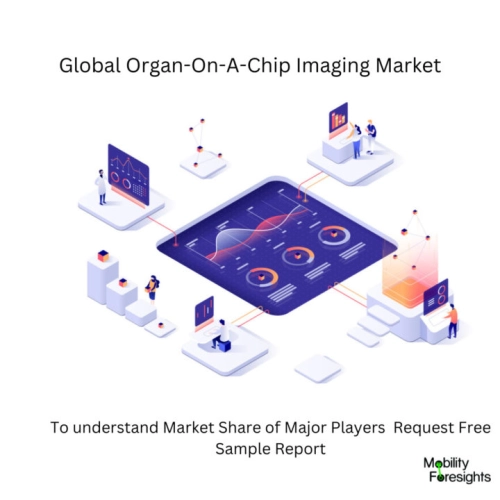
- Get in Touch with Us

Last Updated: Apr 25, 2025 | Study Period: 2024-2030
Devices called organ-on-a-chip (OOC) imitate human organs and can be used for a variety of purposes, including as drug testing (toxicity and efficacy), environmental toxicology, disease models, stem cell development, and carcinogenesis, among others.
Many 3D cell culture technologies, such as organoids, organs-on-a-chip, spheroids, and others, are quickly rising in popularity.
Because they can replicate the important organ/key tissue's functions in a more uniform system, organs-on-a-chip are a particularly promising drug screening paradigm. Multiple cell types can frequently be used in the organisation of organs-on-a-chip and organoids in general.
The development of multilayer organ function organ-on-a-chip technologies can be used to screen medications and treatments without using live animals. These miniature, microfluidic biomimetic devices are being created with increasing sophistication.
Skin-centered models have been utilised to construct organ-on-a-chip applications that accommodate a bioengineered skin equivalent that is continually perfused through a microvascular channel.

Global organ-on-a chip imaging market accounted for $XX Billion in 2023 and is anticipated to reach $XX Billion by 2030, registering a CAGR of XX% from 2024 to 2030.
A "body-on-a-chip" created by the Harvard Wyss Institute is made up of up to 10 organ-on-a-chip devices that are connected to each other to simulate blood flow between various organ systems.
The new technology enables more thorough drug testing, allowing researchers to concurrently observe how a drug affects various organ systems. The Wyss team believes that by using the technology, animal testing for drug development might be cut down while still yielding more important data.
Many organ-on-a-chip technologies have been created. Compared to present methods, which frequently involve animal testing, such technology has the potential to make drug testing more affordable, practical, and accurate.
It is currently hard to determine how a medicine will affect the entire body because such devices often only imitate one or two organ systems.
A multi-human Organ Chip system with a human Gut Chip, Liver Chip, and Kidney Chip was created by the Wyss Institute team. The system's vascular channels are connected by a central arterio-venous (AV) fluid mixing reservoir, and the organ-specific channels are independently perfused.
In drug testing studies, nicotine was supplied to the epithelial channel of the Gut Chip to simulate the drug's oral absorption, first passage through the intestinal wall, passage through the circulatory system to the liver, where it is processed, and passage through the kidney, where it is eliminated.
| Sl no | Topic |
| 1 | Market Segmentation |
| 2 | Scope of the report |
| 3 | Abbreviations |
| 4 | Research Methodology |
| 5 | Executive Summary |
| 6 | Introduction |
| 7 | Insights from Industry stakeholders |
| 8 | Cost breakdown of Product by sub-components and average profit margin |
| 9 | Disruptive innovation in the Industry |
| 10 | Technology trends in the Industry |
| 11 | Consumer trends in the industry |
| 12 | Recent Production Milestones |
| 13 | Component Manufacturing in US, EU and China |
| 14 | COVID-19 impact on overall market |
| 15 | COVID-19 impact on Production of components |
| 16 | COVID-19 impact on Point of sale |
| 17 | Market Segmentation, Dynamics and Forecast by Geography, 2024-2030 |
| 18 | Market Segmentation, Dynamics and Forecast by Product Type, 2024-2030 |
| 19 | Market Segmentation, Dynamics and Forecast by Application, 2024-2030 |
| 20 | Market Segmentation, Dynamics and Forecast by End use, 2024-2030 |
| 21 | Product installation rate by OEM, 2023 |
| 22 | Incline/Decline in Average B-2-B selling price in past 5 years |
| 23 | Competition from substitute products |
| 24 | Gross margin and average profitability of suppliers |
| 25 | New product development in past 12 months |
| 26 | M&A in past 12 months |
| 27 | Growth strategy of leading players |
| 28 | Market share of vendors, 2023 |
| 29 | Company Profiles |
| 30 | Unmet needs and opportunity for new suppliers |
| 31 | Conclusion |
| 32 | Appendix |